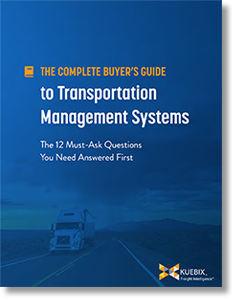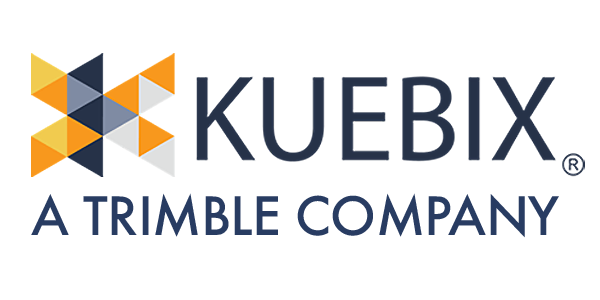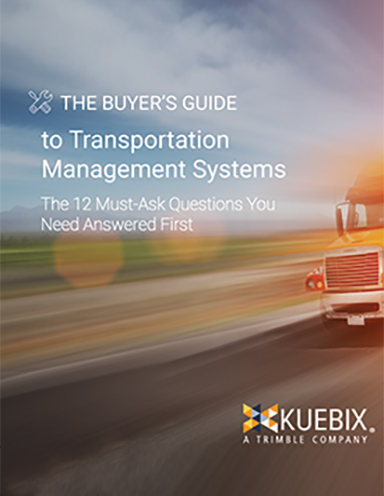Transportation Predictions That Will Shake-Up the Supply Chain Industry In 2018

Dan Clark, Founder and President of Kuebix, gives his annual vision of what he sees happening in the transportation and supply chain industry including; tax reforms, decreased capacity, higher rates, and digital transformation.
In the book, The Living Supply Chain, the authors argue that “Speeding up the supply chain is at the root of everything that is good: improved revenue, reduced working capital, higher profitability, and less obsolete inventory.
Conversely, slowing down the supply chain is at the root of everything that is bad: working capital write-offs, reduced profitability, and slowing revenues.”
To “speed” up the supply chain is to invest in change and change will come with the digital transformation of the supply chain, which is the major focus for executives in 2018.
Much change in the supply chain industry will be due to innovative technologies for digital transformations, along with the recent tax reforms (see below), and the still-current driver shortage/capacity crunch.
The digital transformation of the supply chain will change everything – for the better.
These are the innovative technologies that I predict companies must use to undergo this transformation within their supply chains:
Cloud-based technology deployments lower cost of ownership due to not having a large capital expenditure on hardware and upgrades. Cloud-based solutions are ideal for any size business because they can be scaled up as your business grows and are easier to set-up and manage.
Advanced Analytics will support real-time decision making based on data captured across the supply chain. With analytics, businesses can more effectively predict and fill the demand. You can also manage relationships with carriers, suppliers, and customers while improving processes. Using advanced analytics in a transportation management network to look at historical traffic patterns, you can plan a truck’s route that takes into account time delays for more accurate arrival times.
Tracking and Tracing of raw materials through manufacturing to the end customer must take on Amazon-like capabilities, meaning customers will know where their orders are at any one time, just like when you order from Amazon. With track & trace, you will get deep visibility to SKU-level information from first-mile to last-mile, including the tracking of costs to better monitor transport spend. Communications with customers will be proactive instead of reactive, alerting customers if their order will be late or when it will arrive.
Supply Chain Visibility will make data collected from end-to-end across the supply chain available to all stakeholders, giving them greater control and visibility into what is happening across the enterprise. You can uncover roadblocks within your supply chain that could lead to delays in shipping.
Blockchain will provide interconnectivity between ledgers of supply chain trading partners, enhancing traceability of transaction history. Automating the flow of information among trading partners provides transparency and boosts efficiencies. Blockchain works with cryptocurrency to determine payment amounts, allowing drivers to be paid as they complete parts of their journey. This completely removes the transport broker from the equation, giving drivers access to quicker settlement. However, blockchain is still a technology that needs further development before it can be proved useful to some businesses.
Artificial Intelligence initiatives require specialists who are hard to find, potentially stalling any projects. AI utilizes algorithms to detect patterns in vast volumes of data and interpret their meaning such as predicting whether a carrier will be on-time based on weather conditions and past performance.
Predictive Analytics, often combined with Artificial Intelligence, helps shippers understand, automate and optimize their supply chain processes to gain better efficiencies. Predictive analytics provides shippers with actionable intelligence to guide the decision-making process, helping you to reduce costs and optimize operations. Scorecards on carrier performance can alert shippers on which carriers can better meet their service obligations.
The Internet of Things (IoT) – More devices, from pallets to trucks will have sensors embedded to transmit status and performance data. This real-time information will be used for monitoring everything from equipment health to asset locations to order tracking and more. Advanced analytical systems use the data to uncover trends that lead to performance improvements and cost reductions.
Tax Reform and Other Predictions for 2018
The 2018 transportation market will experience a major shake-up due to recent tax reforms, continued capacity crunch and the focus on the digital transformation of the supply chain. With a cut in taxes on small businesses, cash flow could increase, allowing companies to invest more in technology, human capital, and business expansion.
However, the tightened capacity crunch, driver shortage, and higher freight rates may deter some businesses from making purchases. Tax cuts combined with certain deductions will reportedly add $1 trillion in growth over the next decade, per the Tax Foundation, adding .29 percent to the US GDP and creating 339,000 new jobs.
“Many economic and industry analysts see a positive economic environment for both foreign and domestic markets, giving rise to more investments in tools, like transportation management systems, that can help a business grow and improve customer service levels,” said Dan Clark, Founder and President, Kuebix. “Supply chains will be a major focus for improvements in 2018 as C-level executives come to accept that the supply chain is central to a business’ success.”
The new Tax Bill drives capital investment decisions by giving significant benefits to certain businesses. All companies can fully deduct the cost of equipment purchases the first year the asset is placed into service, incenting shippers to add solutions to help improve the efficiencies and productivity within their supply chains.
Other predictions for 2018 involve:
- Capacity constraints, already high at 99% utilization, will grow even tighter due to increased demand. As a result, transportation costs will go up by as much as 10% or more. Optimization of backhaul movements using a TMS to foster collaboration among providers on a transport network will help ease the capacity crunch.
- Companies are transforming their supply chains with digital technologies that will change the ecosystem of the business, eliminating silos, unlocking performance enhancements and boosting productivity. Digital apps can improve service, cost, inventory levels and processes to drive operational excellence.
- Cloud-based solutions will continue to grow in acceptance as small-to-medium sized businesses begin to deploy systems quickly and for a lower cost to improve supply chain operations.
- In 2018, modular solutions that offer the ability to select a specific function such as inbound management, vendor compliance, or filling a fleet’s backhaul will grow in popularity. A modular solution that integrates into existing infrastructure offers minimal risk and rapid ROI.
- Supply chain transparency will become the forefront of supply chain agendas in 2018 to help businesses be better prepared to mitigate disruptions in the supply chain caused by vulnerabilities associated with natural disasters, suppliers, customers and other risks.
- Customer demand for Amazon-like services in both business and consumer markets will continue to grow requiring visibility up and down the supply chain so that customers will know where their orders are at all times.
- Supply chains will become smarter as more businesses will harness the power of big data to grow more responsive than reactive. Technologies like machine learning and artificial intelligence will be integrated into supply chain apps to further enhance decision making that leads to profitable outcomes.
- Bigger focus on Last Mile Delivery operations with digital-matching of assets (both people and vehicles) will speed delivery times. Shippers want to focus on lowering the cost of this operation while improving service levels.
- Greater focus on Global Logistics Communities where supply chain trading partners connect to a collaborative network to gain access to community-benefitting services such as sharing or matching loads.
“In 2018, shippers must embrace change in order to succeed. Waiting and seeing what will happen is no longer an option,” adds Clark.
“Transportation management systems are poised as the fundamental tool for supply chain transformation, helping businesses to position themselves above the competition with sustainable profits and better service levels.”
Kuebix TMS is a game-changer for your business in 2018, regardless of the company size because Kuebix offers a modular TMS solution that scales by adding premier applications and integrations to meet the needs of even the most complex supply chain operations. Take Back Control of Your Logistics Operations.
Related White Papers & eBooks
The Complete Buyer’s Guide to Transportation Management Systems
There is almost no limit to how a Transportation Management System can benefit your unique supply chain, but the key to success is finding the right one for your goals, so, before selecting a TMS, use the 12 questions in this buyer’s guide to find the best solution for your company. Download Now!
Effectively Managing Big Data in Your Supply Chain
In this white paper, we’ll explain what the term “big data” means to the typical supply chain, introduce effective strategies for managing and leveraging that data, show how one grocer is using predictive analytics to harness its own big data, and explain the “first steps” that companies need to take down the path to effective management of their big data. Download Now!
More Resources from Kuebix
Article Topics
Kuebix News & Resources
Visibility + TMS = A Winning Combination Trimble Placed in 2021 Gartner Magic Quadrant for Real-Time Transportation Visibility Platforms Kuebix Positioned Again as a Challenger in 2021 Gartner Magic Quadrant for TMS The Buyer’s Guide to Transportation Management Systems TMS Update: Adoption accelerates The Logistics of Valentine’s Day during COVID-19 Pandemic Research: Trends in the Supply Chain and Their Impact on the Transportation Management System Market More KuebixLatest in Transportation
Why are Diesel Prices Climbing Back Over $4 a Gallon? Luxury Car Brands in Limbo After Chinese Company Violates Labor Laws The Three Biggest Challenges Facing Shippers and Carriers in 2024 Supply Chain Stability Index: “Tremendous Improvement” in 2023 Trucking Association CEO on New Biden Policy: ‘Entirely Unachievable’ Two Weeks After Baltimore, Another Cargo Ship Loses Power By Bridge Examining the freight railroad and intermodal markets with Tony Hatch More Transportation
















